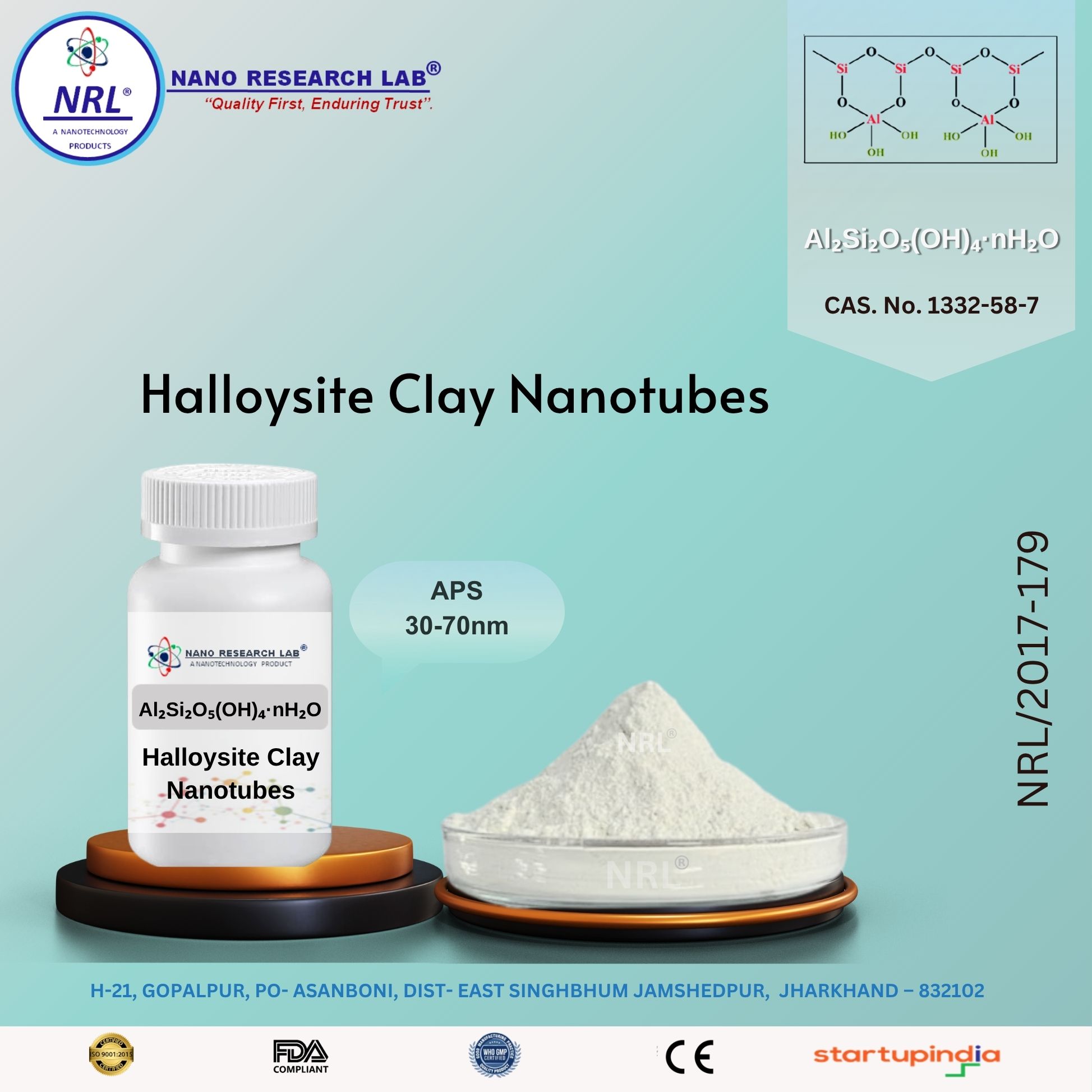
Halloysite Clay Nanotubes (HNTs,Al₂Si₂O₅(OH)₄·nH₂O, 30–70 nm (outer), 10–20 nm (inner) Purity >99%)
₹1475.00
🧪 Halloysite Clay Nanotubes (HNTs, Al₂Si₂O₅(OH)₄·nH₂O, Purity >99%)
⚙️ Technical Specifications
Property | Specification |
|---|---|
Chemical Formula | Al₂Si₂O₅(OH)₄·nH₂O |
Material Name | Halloysite Nanotubes (HNTs) |
Purity | >99% |
Morphology | Hollow tubular nanostructure |
Tube Diameter | 30–70 nm (outer), 10–20 nm (inner) |
Tube Length | 0.5–1.5 µm |
Appearance / Color | White to off-white fine powder |
Crystal Structure | 1:1 Layered Aluminosilicate |
Density | ~2.5 g/cm³ |
Specific Surface Area (BET) | 50–150 m²/g |
Thermal Stability | Up to 500–600 °C |
Solubility | Insoluble in water; stable in most solvents |
CAS Number | 1332-58-7 |
Storage Conditions | Store in airtight container; protect from moisture, strong acids, and bases |
🌟 Key Features
High-purity halloysite clay nanotubes with hollow tubular structure
High aspect ratio for superior loading, encapsulation, and reinforcement
Excellent thermal, chemical, and mechanical stability
Large surface area and reactive sites for adsorption, functionalization, or catalyst support
Biocompatible and environmentally friendly
Dispersible in aqueous and polymer systems
Ideal for nanocomposites, coatings, and biomedical applications
🔬 Applications
1. Drug Delivery & Biomedical
Hollow nanotubes allow encapsulation and controlled release of drugs or bioactive molecules
Used in therapeutics, tissue engineering, and cosmetic formulations
2. Polymer & Nanocomposites
Enhances mechanical strength, thermal stability, and barrier properties of polymers, epoxy resins, and bioplastics
3. Adsorption & Environmental Remediation
Effective for removal of heavy metals, dyes, and organic pollutants from water
Applied in wastewater treatment and soil remediation
4. Coatings & Surface Engineering
Incorporated in protective coatings, paints, and anti-corrosion layers
Improves durability, chemical resistance, and surface functionality
5. Catalysis & Functional Materials
Serves as a support for catalysts or carrier for active molecules
Useful in chemical reactions, sensors, and photocatalysis
6. Research & Nanotechnology
Ideal for nanocomposite research, hybrid material synthesis, and functionalization studies
Widely used in drug delivery systems, encapsulation, and nanoengineering
⚠️ Handling & Storage
Store in a dry, airtight container to prevent moisture uptake
Avoid exposure to strong acids, bases, oxidizers, and high humidity
Handle with gloves, protective mask, and eyewear
Use in well-ventilated areas to avoid dust inhalation
Keep away from heat, sparks, and direct sunlight
